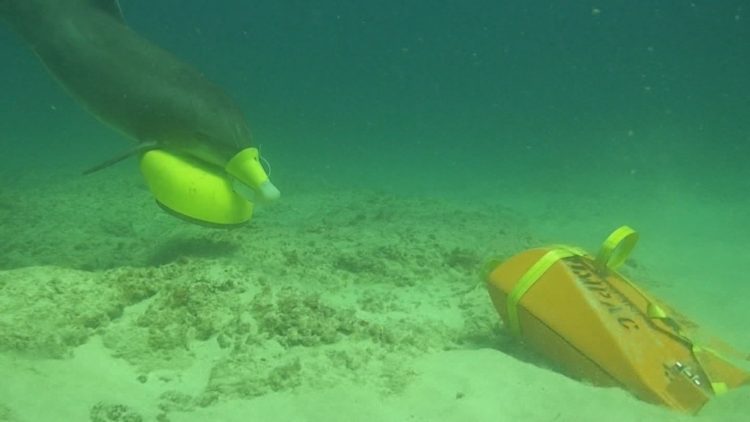Norwegian fishermen spotted a Beluga whale on April 29th that appeared to be wearing some type of harness. The whale also appeared to be tame and came right up to the boat, evidently looking for the humans to feed it. The harness it wore carried a camera mount that had “Property of St. Petersburg” written on it.
The Russian military has been alleged to work with Beluga whales and, during the Soviet years, had a program that trained dolphins. Some claim the program was lethal, outfitting the dolphins with a mask that would fire some type of projectile when the animal rammed enemy divers underwater.
While it is certainly possible the Beluga whale spotted off the coast of Norway was outfitted as a Russian intelligence collection platform (as strange as that sounds), it seems somewhat unlikely if this was the case that the animal would be fitted with a harness declaring it to be property of the Russian government. That defeats the purpose of plausible deniability. It could be the whale was simply fitted with a camera for filming a Russian nature special or some kind of study conducted by marine biologists.
It may also be useful to take a look back at American programs that use dolphins and sea lions to conduct underwater reconnaissance. One such program is called MK 6. From a previous article that appeared on NEWSREP:
In the Fleet’s Operational Marine Mammal Systems (MMS), the Navy uses dolphins and sea lions to find and mark the location of underwater objects.
Dolphins are essential because their exceptional biological sonar is unmatched by hardware sonars in detecting objects in the water column and on the seafloor. Sea lions are used because they have very sensitive underwater directional hearing and exceptional vision in low light conditions.
Both of these marine mammal species are trainable for tasks and are capable of repetitive deep diving.
Some of the objects the animals find are expensive to replace. Others could present a danger to Navy personnel and vessels. The dolphins and sea lions work under the care and close supervision of their handlers and are generally trained for a particular operational capability called a “system.”
(The term “system” is engineering jargon for a collection of personnel, equipment, operations processes, logistics procedures, and documentation that come together to perform a specific job.)
However, animals may be crossed-trained for more than one system to better serve the needs of the fleet. The term “mark” (MK for short) is military jargon for a type of thing within a category. There are 5 marine mammal systems called MK 4, MK 5, MK 6, MK 7, and MK 8. While MK 4, MK 7, and MK 8 use dolphins, MK 5 uses sea lions, and MK 6 uses both sea lions and dolphins.
These human/animal teams can be deployed within 72 hours of notice and can be rapidly transported by ship, aircraft, helicopter, and land vehicles to potential regional conflicts or staging areas all over the world. They regularly participate in major fleet exercises.
Already have an account? Sign In
Two ways to continue to read this article.
Subscribe
$1.99
every 4 weeks
- Unlimited access to all articles
- Support independent journalism
- Ad-free reading experience
Subscribe Now
Recurring Monthly. Cancel Anytime.
These animals are released almost daily untethered into the open ocean, and since the program began, only a few animals have not returned.
The MK 6 System
MK 6 MMS was first operationally deployed with dolphins during the Vietnam War from 1971 to 1972, and Bahrain from 1986 to 1987.
MK 6 has now been expanded to include specially trained sea lions to locate water-borne intruders and suspicious objects near piers and ships that pose a possible threat to military forces in the area. They have been shown to be effective under and around ships, piers, and in open water.
The sea lions were deployed to Bahrain as part of the effort to support missions under Operation Enduring Freedom.
Another curious utilization of animals as spies comes from a hair-brained plan to use cats for electronic eavesdropping. The so-called Acoustic Kitty project saw the CIA sew listening devices inside living cats which were then sent to spy on Russians. Problems arose as the felines were simply too difficult to train and would simply run off to do cat things rather than carry out their patriotic duties. The project was cancelled in 1967 after costing the taxpayers about $20 million.









